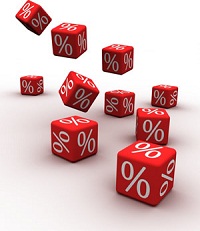 By Miguel Navascués, in Madrid | H. Clark Johnson, professor at Yale University, identifies in a paper titled Monetary policy and the Great Recession, what he calls the six myths of U.S. monetary policy during the Great Depression. The paper not only explains the cause of the hole we’re in, but also the reasons why zero interest rate does not imply monetary expansion. In the latter case, the reason is simple: of the $2.8 billion that the Federal Reserve has injected since 2008, $1.8 billion are bank balances available at the Fed that have an interest rate slightly above Treasury bills. The rest, as we have seen here, is in individuals’ and companies’ safes and they do not dare spend it.
By Miguel Navascués, in Madrid | H. Clark Johnson, professor at Yale University, identifies in a paper titled Monetary policy and the Great Recession, what he calls the six myths of U.S. monetary policy during the Great Depression. The paper not only explains the cause of the hole we’re in, but also the reasons why zero interest rate does not imply monetary expansion. In the latter case, the reason is simple: of the $2.8 billion that the Federal Reserve has injected since 2008, $1.8 billion are bank balances available at the Fed that have an interest rate slightly above Treasury bills. The rest, as we have seen here, is in individuals’ and companies’ safes and they do not dare spend it.
Other interesting things from the article: the fallacy of deleveraging. It is said that the economy can not grow because first you have to repay the accumulated debts. But behind every paid off debt there is a creditor who has received his payment; Why does that creditor prefer to keep the money? Just like companies, for example, that each time they earn an income and they do not use to increase their productive capital. Due to the uncertainty about the future, that no one wants to take the initiative to clear up. If the authorities, especially monetary ones, were committed to maintaining a growth rate instead of passively promise to maintain the rate at zero percent, creditors who manage to collect their debts would be more encouraged to invest and consume.
In Europe, as you know, we’ve become addicted to this myth of first let’s cancel our debts; then, we can grow. It is impossible, as we have seen during the past three years. Not only it is impossible; the fact is that debts are increasing. If no income is generated, you can not deal with the debt; if you do not spend, income cannot be generated. The less income you generate, the more suspicious creditors become, and they skimp on new loans because they doubt they will ever recover their money: risk premiums rise, while businesses are closing down and people end up jobless. Now we are about to enter into a crisis worse than the 2008 one, which is still avoidable.
A zero interest rate is the effect of a supply and demand for money in the inter-bank market; it’s a flat demand, because banks are not interested in obtaining more money so they can lend it. As Friedman said in the case of Japan, a zero-interest is a sign that credit demand is very low. What the Fed should do is raise growth expectations. According to Lars E.O. Svenson, vice governor of the Bank of Sweden:
“It is now generally acknowledged that monetary policy works mainly through the private sector expectations of future interest rates and future inflation that central bank actions and statements give rise to. Those expectations matter much more than the current interest rate. That is, monetary policy is ‘the management of expectations.'”





Be the first to comment on "Zero interest rate and other myths of the Great Depression’s U.S. monetary policy"